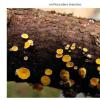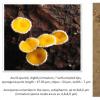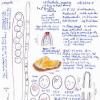
19-08-2011 09:29
 Alex Akulov
Alex Akulov
Dear Friends Today I had the opportunity to see a

17-08-2011 22:51
 Alex Akulov
Alex Akulov
Dear Friends During my recent trip to the Carpath

14-08-2011 17:47
 Alex Akulov
Alex Akulov
Dear FriendsYesterday ended my second in this year

12-08-2011 14:54
roman vargas albertoHello, Do you know if the Peziza arvernensis has i

04-08-2011 04:52
Roland LabbéBonjour !Voici une planche d'un Disco carbonicole

04-08-2011 15:12
Marja PennanenHello forum,when studying Perichaena I noticed som
Yellow discomycete on Picea branches
Alex Akulov,
19-08-2011 09:29

Dear Friends
Today I had the opportunity to see asci of mysterious sample from the branches of Picea. They are a little immature, but still very distinctive. Maybe this will help to learn it?
Thank you in advance,
Alex
Hans-Otto Baral,
19-08-2011 09:47
Alex Akulov,
19-08-2011 10:43

Re : Yellow discomycete on Picea branches
Thank you, Zotto!
I will check.
Alex




